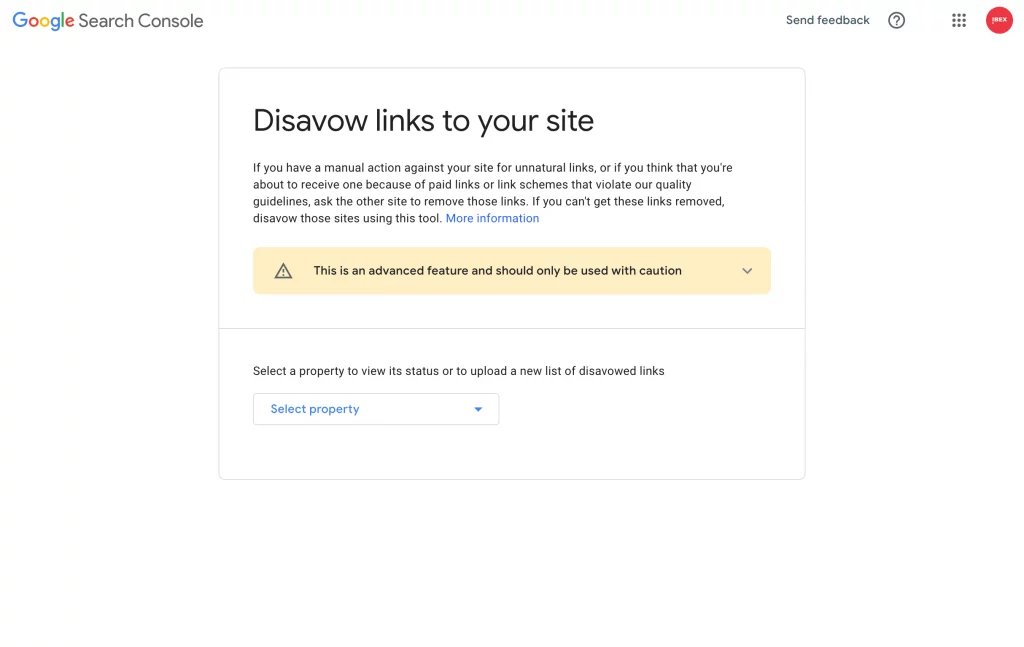Table of Content

- SEO
What Is Link Spam & How To Avoid It?
You’ve almost certainly heard of link building before, most likely from an SEO specialist like myself. It is a factor you should consider in your SEO strategy because it is almost certainly part of your competitors’ strategy. However, there are harmful spam links in circulation in the link building world that you should be aware of. A large number of backlinks not only makes you appealing to Google, but also to spammers.
To begin with, spam links do not always result from active link building. Even if you have a natural link profile and have never actively worked on link building, you will be hit to some extent. I’ll go into more detail in the following sections. In short, thousands of spam sites are created every day by bots or determined scammers/cyber criminals all over the world.
Spam attacks can occur regardless of the size of your website, and the risk of being hit by spam links begins the day your domain is made available online.
This is an area that should not be overlooked because allowing a spam attack to take root can have disastrous consequences for your organic visibility in Google. If Google is one of your primary marketing channels, it will also be detrimental to your business.
What Is Link Spam?
Spam links are generated by bots or auto-generated sites that publish unnatural content with backlinks to a large number of different sites. As a result, the search engine is manipulated, as the sites that receive these links have their link profile expanded.
When these links are added, the site or a specific URL receives an injection of backlinks, or your site appears in several long lists of links with no other content attached.
The quality of the content on these sites is noticeably lower and more disjointed than that found in traditional online media. Sites like these are only created for the purpose of building links, and as a result, they frequently lack traffic and other types of content – as well as a clear topic for the site. As a result, these sites typically do not have particularly high authority, as they lack rankings, traffic, technical optimization, and authoritative backlinks – all of which Google values.
Spam links can also be used as a negative SEO tactic to harm another website. The difference between this type of spam link and others is in the content, which is among the worst on the internet. Most of the time, the content on these pages has nothing to do with your content. Porn is a popular topic within this (though it has been phased out significantly in recent years), and the pages contain a slew of pop-ups containing malware.
Although you may know what to look for now, it can be difficult to distinguish between spam sites and legitimate media/blogs that are both created with a good intention and will provide you with value.
As a result, we’ll look at which parameters you can examine to detect spam signals.
How Do You Identify Spam?
Some of the signals discussed in this section may necessitate the use of a link data collection tool, such as Ahrehs, Semrush, Moz, or Google search console. Google Search Console is a free tool that I recommend using regardless of the size of the SEO effort you want to begin.
If you have access to a tool like the ones mentioned above, you can look for the five factors listed below.
- Domain name
- Number of backlinks from the same domain
- Page content
- The use of anchor text
- The value of the link
Domain Name
This aspect is actually quite simple. Pay attention to the domain names when reviewing your link profile. If you come across a domain that does not seem familiar based on its name, contains strange compound words, is foreign (provided you only work locally), and has a strange TLD/ccTLD (domain extension), it is possible that it is spam.
Check out these websites:
.pw
.me
.xyz
.tk
.cf
If you come across domain extensions that cannot be associated with a country or some of the recognized international extensions, you should look into the domain further.
Finally, consider whether the domain name is associated with the industry or niche you are in when evaluating it.
Number Of Backlinks From The Same Domain
As previously stated, spam is a form of manipulation, and in some cases, this can be seen in the number of backlinks from the same domain. However, it should be noted that if you participate in forums or have close business partners, for example, you will have more than one backlink from one domain from these sources. However, just as with the domain name, investigate the domain further if you find several backlinks from the same location.
Page Content
If you discover a suspicious domain, go to the site and examine the content that is linked through. You can expand the “links to target” function in Ahrefs to display the exact URL of the domain that is linking and the anchor text that is linked. When you go through the content, evaluate the quality of the content that is linked to. If the text is poorly written, has no common thread, and has no relevance to your site, it is most likely spam.
The Use Of Anchor Text
Once you’ve found a suspicious link again, examine what anchor text is being linked through. The way in which you can see in the anchor text whether it is spam is again relevant. If there are links through anchor texts that are not relevant to your product, your industry or your name, then it is probably spam.
The Value Of The Link
As previously stated, Google is currently focused on spam fighting, but this has also been the case in the past. The Penguin update is based, among other things, on spam. Penguin was introduced in 2012, and the most recent update occurred in 2014.
As a result, the worst spam sites struggle to establish any kind of authority or “link value.” As a result, you will be able to identify spam links by looking at the domains with the lowest rating (e.g. DR in ahrefs). As a result, sort your link profile by lowest possible rank and search these domains for spam signals, as I previously mentioned.
IBEX Media Group is a leading SEO Agency in Bangkok. We are ready to help your company rise to the top of Google.
However, keep in mind that completely new sites will have little or no authority/value, so be careful not to label a new business partner, blog, or media as spam based solely on this criterion.
How Do You Remove Spam?
Now that you know which parameters you can use to define a spam link, I’ll show you how to combat spam links.
When we talk about combating spam links, we mean removing the relationship to the spammy sites and, ideally, the link between the two sites.
Because you cannot ask spam sites to remove your link because they are either bot-generated or cannot be contacted, the next best thing is to notify Google about the attack.
As previously stated, Google is very interested in removing spam from the indexing process, which is why they have also provided a tool for identifying, and eventually eliminating spam.
The tool is called “disavow links” and is integrated into Google Search Console. Google says the following about the tool:
“… If you are unable to have these links removed, you can use this tool to disavow the websites in question.”
As previously stated, it is recommended that you contact the other website and request that your link be removed. If you are unable to do so, you submit a list to Google, where you “reject” the list of links you want to be rejected. Following that, Google will inspect the domains for violations of their quality guidelines – and “remove” those that do.
According to Google, you must upload the list to the tool. In addition, the list itself must be uploaded as a text file (.txt). The list should only include the domains that you want rejected. An example of such a list is as follows:
domain:spamsite1.xyz
domain:endnuetspamsite.ru
domain:spammy-spam.cf
domain:irrelevantlink.tw
In this manner, you show Google which domains you want investigated for guidelines violations, as well as ensuring that future links from the same domain are rejected.
Following that, we recommend checking your link profile every 1-2 months. Check to see if more spam links have been added, and if so, update the submitted list with the new ones so that the domains from the previously submitted list remain rejected.
Maintain your link profile, ignoring it can have serious consequences for your organic visibility, and getting back to the top will be a long and difficult battle!




![happy-young-asia-businessmen-businesswoman-meeting-brainstorming-some-new-ideas-about-project-scaled (1) Top 10 Digital Marketing Agencies In Thailand [2024]](https://www.ibex.co.th/wp-content/uploads/elementor/thumbs/happy-young-asia-businessmen-businesswoman-meeting-brainstorming-some-new-ideas-about-project-scaled-1-qji23hztd22xdvln8gjfucufhgiekie3sh7loq8di6.webp)





